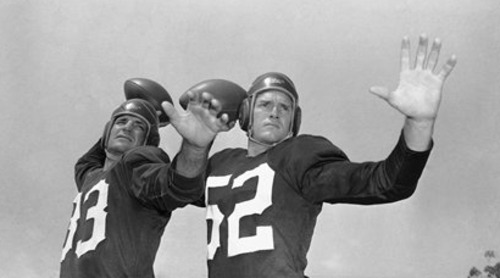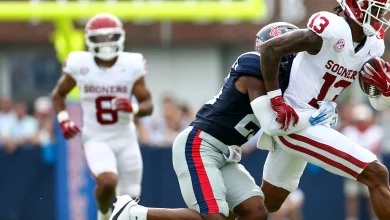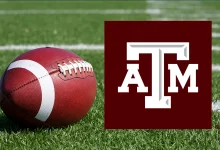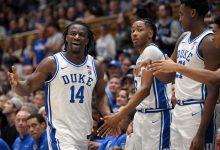Alabama’s No. 52 was one of school’s early dual-threat quarterbacks

When you think of a quarterback at the University of Alabama, images of precision passers, powerful pocket presences, and methodical leaders likely come to mind. The storied lineage of the Crimson Tide includes Heisman winners like Bryce Young, NFL stars like Mac Jones, and national champions like AJ McCarron and Tua Tagovailoa. But well before the modern era of fast-paced spread offenses and multi-dimensional quarterbacks, Alabama had already fielded one of college football’s earliest dual-threat signal-callers. He wore No. 52—an unusual number for a quarterback—and left an indelible mark on the game and the program. His name: Harry Gilmer.
To understand just how ahead of his time Gilmer was, you have to go back to the 1940s, when football looked very different from today. The game was slower, more physical, and overwhelmingly run-dominated. Most teams utilized single-wing or T-formation offenses, relying on tailbacks and fullbacks to move the ball, while quarterbacks mostly handed it off or blocked. Passing was still seen as a risky luxury.
Into this landscape entered Harry Gilmer, a wiry 6-foot, 165-pound athlete from Birmingham, Alabama. Born in 1926 and raised during the Great Depression, Gilmer grew up with a football in his hands. He played multiple positions at Woodlawn High School, but it was his versatility, intelligence, and uncanny ability to evade defenders that made him stand out. By the time he arrived in Tuscaloosa in 1944, the world was still at war, and Alabama’s football team, like many others, was depleted of older talent due to military service. This opened the door for young players to make an immediate impact. Gilmer took full advantage.
As a freshman in 1944, Gilmer burst onto the scene, quickly assuming the role of tailback in Alabama’s single-wing offense—a position that essentially made him the primary runner, passer, and even punter. While the title “quarterback” wasn’t used the same way it is today, Gilmer effectively ran the offense from the backfield, and his skill set made him the focal point of every game plan.
What set Gilmer apart from his peers was his dual-threat ability. At a time when quarterbacks—or tailbacks in the single-wing—rarely ran and passed with equal effectiveness, Gilmer excelled at both. He led Alabama in rushing and passing for multiple seasons, combining shifty footwork with an unusually accurate arm for the era. And he didn’t just throw short—he launched deep passes with flair, often off his back foot, and was known for a signature jump pass that would become iconic decades later with players like Tim Tebow.
In 1945, his sophomore season, Gilmer helped lead Alabama to an undefeated 10–0 record, a victory in the Rose Bowl over USC, and a No. 2 national ranking behind only Army. That team outscored opponents 430 to 80, and Gilmer was the engine. He passed for 905 yards and rushed for 1,457 more, totaling 19 touchdowns in an era when seasons were short and statistics weren’t padded by inflated modern systems. He finished fifth in the Heisman Trophy voting and earned All-American honors—a testament to just how rare and respected his talents were.
Beyond the numbers, Gilmer’s play was electric. He didn’t just run; he glided. He didn’t just pass; he threw with anticipation, touch, and vision. He called plays on the field and adapted instinctively, long before offensive coordinators ruled from the booth. Coaches marveled at his field awareness and creativity. Opponents feared his unpredictability. In many ways, he was college football’s first real improviser—the kind of player who didn’t just execute plays but created them.
His jersey number—52—still stands out in hindsight. At the time, jersey numbers weren’t as standardized by position as they are today. While most quarterbacks wore numbers in the teens or 20s, Gilmer stuck with 52 throughout his college career. The unusual number became symbolic of his unique style and position. In the years since, it’s become a historical curiosity: how did a quarterback ever wear 52? For Alabama fans, though, it’s just one more reason why Harry Gilmer remains unforgettable.
Gilmer’s junior and senior seasons were equally impactful, though the team didn’t reach the same heights as in 1945. Still, Gilmer consistently produced at an elite level, and his leadership and toughness were never in question. He finished his college career with over 4,000 total yards in an era where most games didn’t crack 200 yards of total offense. He once returned five punts for touchdowns in a single season and even played safety and punted when needed. Simply put: if he could do it, he did.
When the 1948 NFL Draft arrived, Gilmer’s unique talents didn’t go unnoticed. He was selected as the No. 1 overall pick by the Washington Redskins—a rare feat for a player from the South in that era and an even rarer distinction for someone considered more of a “tailback” than a pro-style quarterback. In the NFL, he played both quarterback and halfback over a nine-year career, making two Pro Bowl appearances and remaining one of the league’s most exciting players throughout the early 1950s.
But even as he succeeded at the next level, Gilmer remained tethered to his Alabama roots. He returned to the college game as an assistant coach, including a stint on the Crimson Tide’s staff in the early 1960s. Later, he became the head coach at his alma mater’s rival, Auburn University, in 1963. His tenure there was brief and not particularly successful (he went 12–24–1 over three seasons), but it illustrated the respect and trust he commanded across the state.
Over time, Harry Gilmer’s legacy at Alabama took on a mythic quality. He wasn’t just the best player on the field—he was ahead of his time. Long before it was trendy or even fully understood, he embodied what we now call a dual-threat quarterback. Today’s stars—Lamar Jackson, Jalen Hurts, Caleb Williams—are often described as “the evolution” of the quarterback position. But in truth, that evolution started decades earlier, with a skinny kid from Birmingham who wore 52 and turned the game on its head.
He wasn’t doing it to break barriers or make statements. Gilmer played that way because that was who he was. He saw the game differently. He trusted his instincts. He dared to run when others stayed in the pocket. He took flight when others took sacks. And he never once looked out of place while doing so.
In 1993, Gilmer was inducted into the College Football Hall of Fame, an honor that recognized not just his stats but his revolutionary impact on the game. In Alabama, his name is still spoken with reverence among those who study the program’s rich history. Before Saban, before Stallings, even before Bryant’s dominance in the 1960s, there was Gilmer—an innovator in cleats, running and passing like it was second nature, redefining what a backfield player could be.
For a program so steeped in tradition, the story of No. 52 serves as a reminder that even the most progressive ideas sometimes come from the past. When Alabama fans today marvel at the dual-threat exploits of Jalen Milroe, or recall the balanced brilliance of Tua Tagovailoa, they are witnessing echoes of Gilmer. The difference is, he did it before it had a name—before the term “dual-threat” even existed.
He didn’t need RPOs, no-huddle offenses, or spread formations. He just needed the ball and a little space. That’s all it took for magic to happen.
Harry Gilmer passed away in 2016 at the age of 90, leaving behind a legacy that extends far beyond statistics or trophies. He showed that quarterbacks could be more than just game managers or glorified handoff artists. He proved that instincts, athleticism, and improvisation had a place at the highest levels of the sport. And he did it all in an era that didn’t yet know how to celebrate it.
There’s something poetic about that.
Today, Alabama quarterbacks wear numbers like 9, 13, and 4. They lead high-octane offenses with advanced playbooks, private trainers, and video analysis. They play in domed stadiums and sign NIL deals worth millions. But every time one of them takes off from the pocket, scrambles for 20 yards, or throws a jump pass into the end zone, they’re channeling a bit of history—whether they know it or not.
They’re following in the footsteps of No. 52.
And in a way, so is every dual-threat quarterback who’s ever played the game.









